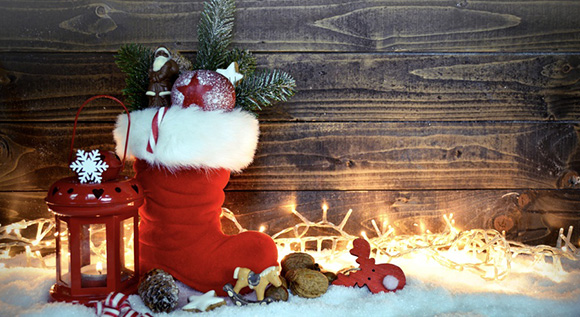Cut down on your energy consumption, not the number of lights
It’s nearly Christmas! Choose some energy-efficient fairy lights and lamps that can be dimmed to summon the Christmas spirit and lower your electricity bill at the same time.
 © Fotolia.com/S. H. exclusiv
© Fotolia.com/S. H. exclusiv
Advent and Christmas have traditionally been a time when people light candles. But many of the decorations we have in our home are lit by electric lights, small and large. If you choose the right light bulbs, you can lower your electricity bill without spoiling the festive mood. LEDs (Light Emitting Diodes) and energy-saving light bulbs use around 80 per cent less power than traditional light bulbs, and the days when they all emitted cold shades of light are past. The shade of light is indicated in Kelvin. The higher the figure, the colder the shade. Around 2,700 Kelvin suffice to create a warm shade of light. If you want to light your office space, you might go for something as high as 4,000 Kelvin. You can also buy LEDs that can be dimmed. If you buy one of those, make sure that the dimmer and the light bulb go together, which is not always the case.
LEDs and energy-saving light bulbs perform best on energy efficiency
Whilst LEDs are more expensive to buy, their much lower energy consumption over their lifetime means that the investment pays off. Read the energy label (click here to find our more) to find the most efficient lighting. Thanks to the European Ecodesign Directive, we are witnessing the departure of the most inefficient products from supermarket shelves. Since September this year, shops have no longer been selling high-voltage halogen lamps (GU10 fitting). In 2018, pear-shaped halogen lamps and halogen lamps with a standard fitting will also be phased out. In future, the market for lighting will be organised around two products, namely highly-efficient LEDs and energy-saving light bulbs.
When buying a light bulb, you should check it for its energy-efficiency class and make sure you get the right shade of light, brightness, and fitting. Brightness is indicated in lumen. The higher the figure, the brighter the lamp. In most cases, however, the packaging will tell you the bulb’s equivalent brightness in watts. Before you head to the shops, check which fitting you need. In most cases, it will be the E27 or E14 fitting that can be screwed on. Spots and halogen lamps are often fitted for plug-in bulbs. You will find all of the information you need on the packaging.

